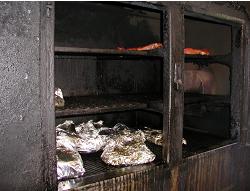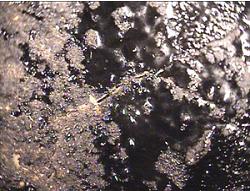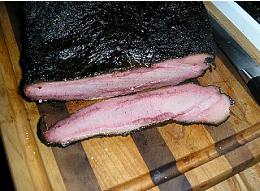Creosote



As we learned in How Wood Burns, the cellular materials of wood vaporize at high temperature. If these vapors burn, we call it flame. If they don’t, we call it smoke. When smoke contacts a cool surface (like cold meat), these vapors condense, much like water condenses on the outside of an iced tea glass on a humid day. The condensate of unburned smoke is called wood creosote. It’s the reason you have your chimney swept – this stuff is a highly flammable hydrocarbon. Yum!
If you’ve ever had barbecue that was black and bitter, or “oversmoked,” or had an oily aftertaste that hinted of
turpentine, you’ve tasted creosote. If the inside of your pit is coated with a shiny, flaky, black layer, you’ve made it. Some people like it – there’s no accounting for taste – but here’s a few facts that might give you pause:
- The major chemicals in wood creosote are phenol, cresols, and guaiacol.
- Wood creosote has in the past been used as a disinfectant and as a treatment for cough, leprosy, pneumonia, and even tuberculosis.
- Wood creosote is the active ingredient in Seirogan, a Japanese antidiarrheal medicine, but it has also been used as a laxative. Creosote affects individuals in unpredictable ways – you might say it’s a bit of a crapshoot.
- Eating large amounts of creosote may cause burning in the mouth and stomach pain.
- Rats and mice fed a large amount of wood creosote at one time had convulsions and died; rats fed a smaller amount of wood creosote for a long period developed kidney and liver problems and died.
Creosote is bad for barbecue. Avoid it by ensuring your “smoke” is always clear (or thin blue), which indicates good, clean combustion is in progress.


